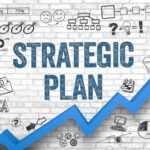In the ever-shifting sands of the business world, change is not a mere option, but a survival imperative. The classic models, including Kotter’s 8-Step Process, have long been beacons for change management. However, as the tides of technology and globalization accelerate, there’s a call for a more agile and integrative approach. Enter the Six-Step Framework for Progressive Change—a nuanced blueprint that champions continuous evolution in today’s complex business ecosystems.
1. Ignite Awareness: The Spark of Transformation The genesis of change lies in awareness, but not just any awareness—it must be a deep, visceral understanding of the need for transformation that permeates the entire organization. Take, for example, Nokia’s pivot from paper to phones and then to communications technology. The initial spark wasn’t just about losing market share; it was about seeing a new digital horizon and seizing it with both hands. Leaders must harness data, trends, and foresights to craft a narrative that not just informs but inspires action.
2. Build Unity: Forging the Alliance of Progress Unity is the bedrock of sustained change. It transcends the concept of assembling a coalition of the willing into creating a symphony of diverse voices, all harmonizing on the need for change. Look at how Apple, under Steve Jobs, realigned its entire organization to support the vision of simplicity and innovation. It wasn’t about a few people at the top making decisions; it was about every employee understanding and buying into the ethos of Apple’s renaissance.
3. Shape the Vision: Charting the Course A vision without action is a dream, but action without vision is a nightmare. This step is about crystallizing a shared vision that acts as a North Star for the organization. It’s the kind of vision that propelled SpaceX to pursue the audacious goal of Mars colonization. A clear vision provides a roadmap, sets the destination, and aligns all efforts towards that end. Crafting this vision requires a delicate balance of foresight, feasibility, and clarity.
4. Foster Empowerment: The Engine of Change Change agents within an organization are its most valuable assets. This step is about enabling and equipping every individual to enact the vision. Google, for instance, empowers its employees with ‘20% time’—the freedom to use a fifth of their workweek to pursue innovative projects. This empowerment has led to products like AdSense and Gmail. By removing barriers and fostering a culture that encourages initiative, businesses can turn the gears of innovation at all levels.
5. Celebrate Momentum: Cultivating the Change Culture The path of change is often long and fraught with challenges. Celebrating milestones, therefore, becomes a critical mechanism for maintaining morale and momentum. When LEGO faced a near-bankruptcy situation, it wasn’t just the strategic shifts that turned the tide, but also the celebration of small victories that rejuvenated the brand. It’s about recognizing contributions and reinforcing the journey’s value to keep the wind in the sails of transformation.
6. Integrate and Cultivate: Solidifying the New Paradigm The final frontier of change is embedding the new ways into the organization’s ethos. This is about the Amazon-like persistence to maintain customer-centric innovation as part of its core philosophy, long after the initial successes. It’s the continuous nurturing of change, making sure that the new practices are not just adopted but embraced and improved upon over time.
Conclusion The Six-Step Framework for Progressive Change is more than a roadmap; it’s a compass for continuous adaptation in a business landscape that is perpetually in flux. It’s a living process that doesn’t end with the integration of new practices but evolves with them. By considering change as a cycle of perpetual motion rather than a finite project, organizations can forge a culture that is inherently resilient, adaptable, and primed for the challenges of tomorrow. Whether it’s the radical disruptions of the tech industry or the subtle shifts in consumer behavior, this framework is designed to guide leaders and organizations through the multifaceted journey of meaningful change.












About The Author
Janus Andersen
Advice on Strategy | Innovation | Transformation | Leadership Helping growth strategies and M&A transactions for 20 years